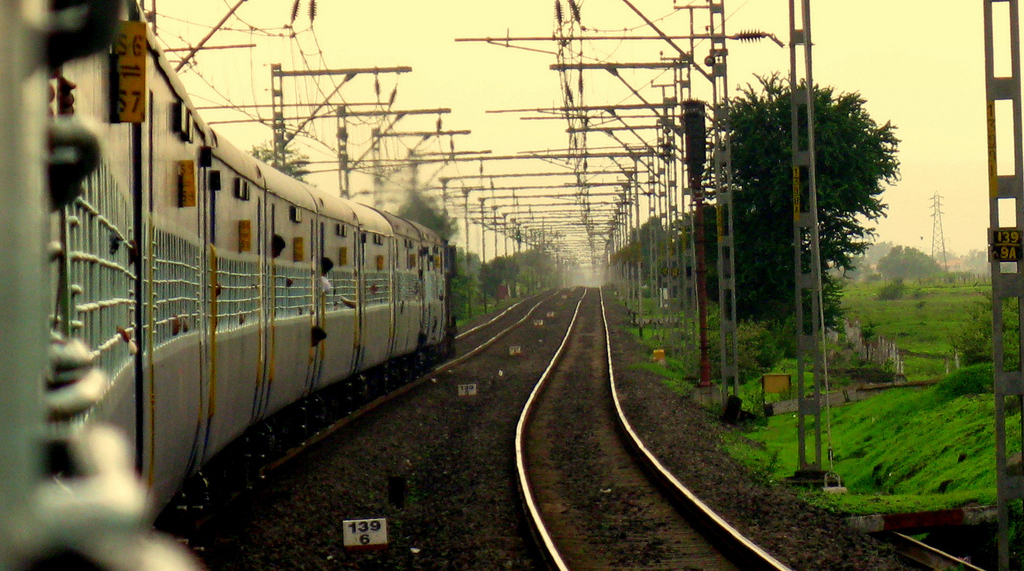Railways are the future—so how can countries finance them?
2018.02.28

Martha Lawrence,Senior Railway Specialist
As a railway expert working for the World Bank, I engage with many client countries that are looking to expand or upgrade their railway systems. Whenever someone pitches a railway investment, my first question is always, “What are your trains going to carry?” I ask this question because it is fundamental to railway financing.
Railways are very capital intensive and increasingly need to attract financing from the private sector to be successful. That is why the World Bank recently updated its Railway Toolkit to include more information and case studies on railway financing. Here, in a nutshell are the key lessons about railway financing from this update.
What is financing?
Financing is the process of converting future cash flows into money that can be used for investment now. Let’s look at a typical railway investment project. The project requires a big investment up-front. Over time, the project has revenues and operation and maintenance costs. The revenue is (hopefully) more than the operating cost, so the project generates positive cash flows and profit over time. Financing is the mechanism for converting the profits in the later years into money that will be made available now, so that the railway can make the investment. Financing is not free money—it must be paid back, with interest or dividends added.
What is funding?
Funding is the revenue stream that pays back the financing. It is the foundation that makes financing possible. Funding may come from passenger ticket revenues, freight contract revenues, subsidies from government to provide social services, or revenues from leveraging assets such as stations and right-of-way. That’s where the question of “What are your trains going to carry?” comes in, as it will allow us to identify the source(s) of funding, which in turn can lay the foundation for a solid financing plan.
Funding gap
Sometimes the future funding will not be enough to pay for the needed investment—in which case the railway is left with a “funding gap.”
To close the gap, the railway can:
- Reduce investments and/or operational costs
- Increasing revenue by expanding profitabletraffic and/or obtaining subsidies from government for providing loss making services.
In many railways, strategies to reduce the funding gap rely mostly on the core railway business, with actions to increase revenue and decrease costs. The Railway Toolkit contains case studies of such railways. In addition, some railways own assets that can be used for activities beyond railway operations. Stations can be developed for retail use. Right of way can be rented to communications companies for laying fiber optic cables. Passenger footfall can be leveraged into advertising. Selling the rights to use these assets can create an additional source of funding for the railway. The Railway Toolkit also contains new case studies of railways that have leveraged their station real estate value and right-of-way.
If it successfully closes the funding gap, the railway will be able to attract private sector financing through many structures and instruments. Thus, the most effective action that a railway or government can take to attract private sector financing is to adopt policies to close the railway’s funding gap.
Risk
When the private sector looks at a financing opportunity, it will examine potential risk very closely and will build its risk perception into the cost of providing the financing. In my experience, two of the risks that investors take most seriously relate to the governance of the railway sector as a whole, and the corporate governance of the railway company itself:
- On sector governance, the private investor wants to know, “If I invest in this railway or this project, will the government change the rules of the game in a way that reduces the funding that is supposed to pay back my investment?”
- On corporate governance, the private investor will ask, “Does the governance structure of the railway company ensure that it will take commercially viable/sensible decisions that will support its ability to pay back investors?”
To keep the cost of financing low—and, indeed to access private sector financing at all—these governance risks must be addressed to investors’ satisfaction.
Public-Private Partnerships (PPPs)
PPPs are best thought of as a project delivery mechanism with a financing component built into it. PPPs in railway can be very effective when: The private sector brings a skill that the railway lacks; The private sector can manage the construction or operation of the project more efficiently than the railway; or PPP creates incentives for service and market development that would be otherwise lacking. If only financing is needed, PPPs may not be the best option, as they are complex to design and tender, and require ongoing capacity to supervise effectively.
Maximizing Financing for Development
In September 2017, the World Bank launched “Maximizing Finance for Development,” which seeks to crowd in private financing for development needs. For railways, financing will be maximized by policies to address the funding gap and mitigate risks through transparent, robust sector and corporate governance. With these interventions, the railway can access many private sector financing instruments—loans, bonds, equity, leasing—as well as consider PPP as a project delivery mechanism with financing.
And remember, always ask, “What are your trains going to carry?”



